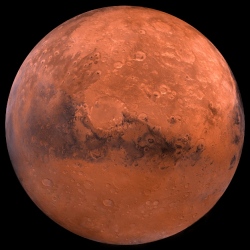
Discovering life on another planet, only to contaminate that world with our own pesky microbes, is one of NASA’s nightmare scenarios. To find out whether single-celled Earthlings can hitchhike to Mars and survive on the Red Planet’s surface, NASA is going to see how they do 120,000 feet up.
Today, weather permitting, a helium balloon carrying a very special scientific experiment will launch to the edge of space from NASA’s Columbia Scientific Balloon Facility in Fort Sumner, New Mexico. Its passengers, a collection of bacteria, are loaded into containers that’ll shield them from the elements during their ascent into Earth’s stratosphere. Once the balloon reaches its target altitude, the sample chambers will pop open, exposing their hapless test subjects for a pre-determined period of time: 6, 12, 18, or 24 hours. At the end of the experiment, the balloon will explode and its microbial payload will parachute back to Earth.
Earth’s upper stratosphere is a pretty hellish environment: It’s well below freezing, bone dry, practically a vacuum, and awash in ultraviolet radiation. Sorta like the surface of Mars. It’s hard to imagine anything surviving up there, and yet, previous studies have shown that some fearless bugs do make a living in the stratosphere after being blown skyward by dust storms or hurricanes. Even more impressive, recent work on the ISS shows that dormant bacteria, fungal spores, and even plant seeds can survive strapped to the outside of a spacecraft, if they’re shielded from the intense UV radiation.
Given life’s tenacity, the possibility of contaminating an alien environment is one that deserves to be studied and understood. Beyond Mars, there’s NASA’s recently announced Europa mission, and further down the line, we might even send a space probe to Saturn’s ice moon Enceladus. Both of these missions, if and when they happen, will be on the hunt for alien life. It sure would be a bummer to mistake a stowaway for the biggest scientific discovery of all time.
